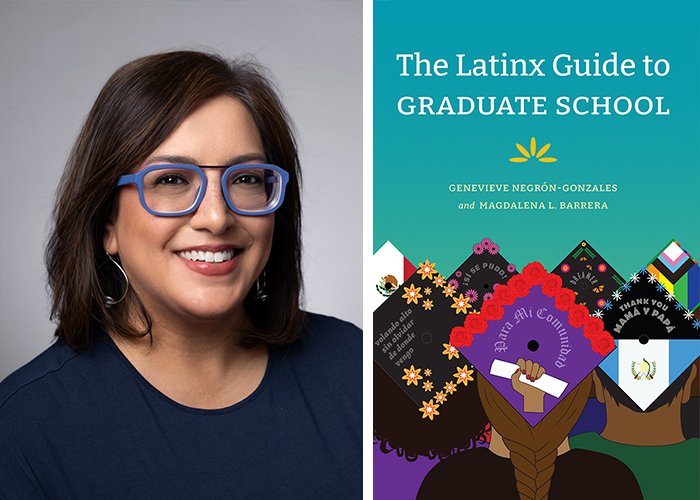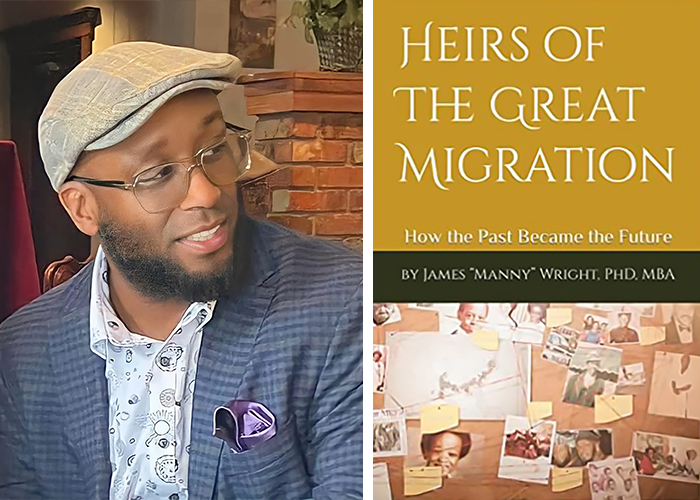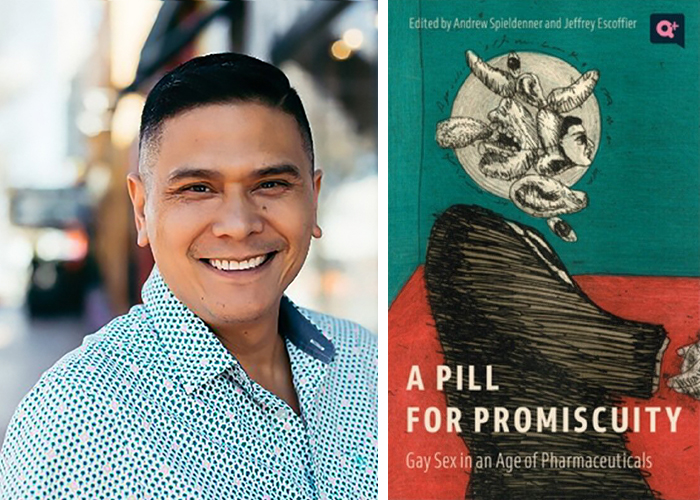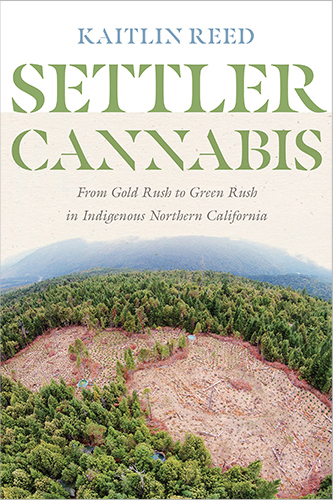
Equal parts how-to guide, personal reflection and academic musing, "The Latinx Guide to Graduate School" is for Latinx individuals at any stage of pursuing a graduate education. It is organized into seven thematic chapters that address the hidden curriculum of higher education and cover topics ranging from identifying the purpose of graduate research to developing a graduate student identity.
Co-author Magdalena Barrera says this book is meant to demystify and clarify elements of the graduate school process that Latinx students often do not know because they are the first in their families to walk that path.
Barrera, vice provost for faculty success and a professor of Chicana and Chicano studies at San José State, and co-author Genevieve Negrón-Gonzales, an associate professor of education at the University of San Francisco, were inspired by their years of mentoring students.
“We saw the common questions they raised about graduate school and, reflecting on our own experiences as first-generation students, we knew which aspects of the hidden curriculum feel confusing or intimidating," Barrera says.
She says a mutual colleague and friend was advising a Latinx first-generation student who was heading to a graduate program and asked them if they knew of a guide that could help them understand what to expect. “When we each said, 'No, I don't know of any book like that,' she replied: 'You two should really write it!'"
At the core of the book, Barrera says, is the idea that a master's or doctoral degree is not an end in itself but a tool that enables people to go on to do something bigger. And, she adds, being on that journey does not mean that students have to abandon their family, community or cultural values.
“Our message to readers is that our collective histories, values and ways of engaging in community can be our sources of strength as scholars," Barrera says. “They are the means through which we transform the academy for the better."
In her role as vice provost—the first of its kind for the university—Barrera oversees all aspects of faculty recruitment, tenure and promotion processes and is committed to recruiting and retaining diverse faculty who bring asset-minded pedagogies to the classroom.

"Heirs of the Great Migration" is a memoir, of sorts, grounded in James “Manny" Wright's family migration from Jim Crow-era sharecropping in North Carolina to manufacturing jobs in the industrial Northeast. Wright, an assistant professor of educational leadership at
San Diego State, describes it as a story of overcoming a dark American past through one family's journey in search of better life opportunities.
The book is narrated from the eyes of Wright as he was coming of age at the intersection of deindustrialization and the crack-cocaine epidemic—which sparked the 1994 Crime Bill and mass incarceration, e.g., The New Jim Crow. Caught in the dragnet of the Crime Bill, Wright was convicted at a young age on trumped-up charges and imprisoned. Now, a professor with Master of Business Administration and Doctor of Philosophy in K-12 Educational Administration degrees, he reflects on overcoming historically rooted sociopolitical and socioeconomic structures, educational obstacles and legal setbacks he faced that mirror the ways his family's past had become the future.
Wright says writing about his and his family's past was tough to do, acknowledging that, “There was a lot of pain that I had tucked away, that I didn't want to deal with, but it was cathartic. Writing this book is one of the most significant accomplishments in my life."
"Heirs of the Great Migration" is also a call to action for people who are concerned about the welfare of Black boys in public PK-12 schools who are, statistically, suspended and expelled at higher rates and experience more police interaction than their peers.
"What is happening in our schools today is fundamentally reflected by an egregious past of oppression, marginalization, racism and white supremacy," Wright says. "That's why it is important for schools to provide culturally responsive curriculum and hire teachers that look like the students they serve."
Wright's work at SDSU centers around promoting educational equity and exposing coloniality in the PK-12 system as well as highlighting how educational policies contribute to a repressive school experience for minoritized students and communities.

"A Pill for Promiscuity," co-written and co-edited by
CSU San Marcos Associate Professor of Communication Andrew Spieldenner, is a collection of queer academics, activists, artists and community members talking about promiscuity and gay sex today, when there are pills for everything.
“My co-editor Jeffrey Escoffier and I were talking about all the pills we take to stay healthy and active—to deal with everything from blood pressure to HIV," Spieldenner says. “It surprised us that other queer academics were not engaging this topic directly, when the larger community was developing tools, narratives and strategies to use these pills to prevent HIV transmission, improve erections and stay healthy."
The book is aimed at the general LGBTQIA community and those interested in the topics of sex and pharmaceutical interventions, and it incorporates varied writing styles—from brief articles to a comic strip. The editors intentionally made it a short, affordable book at around 100 pages and costing about $20.
Spieldenner says two things surprised him while writing this: his observation that few people talk about sex anymore in any meaningful way and the passing of his co-editor Escoffier.
“When Jeff died, I was surprised at how much I could still hear his voice in the collection," Spieldenner says. “Every time I did an interview or a reading, I could hear him commenting on my answers. He always described the book as a Sunday afternoon meet-up in a Brooklyn gay bar, where you'd run into someone new and interesting and, for an hour or two, you would build a whole world in the conversation."
Spieldenner, who has taught at CSUSM since 2017, conducts groundbreaking research on topics that affect the LGBTQIA community, particularly involving gay men. He also serves as executive director for MPact Global Action for Gay Men's Health and Rights.

Cal Poly Humboldt Professor of Native American Studies Kaitlin Reed's debut scholarly monograph, "Settler Cannabis," examines the settler-colonial pattern of resource extraction—from gold to timber to cannabis—and its impact on Northern California. Reed says '"resource rushing" has always been less about obtaining the specific resource in question and more about control over lands and the ability to assert ecological managerial authority, often to the detriment of Indigenous peoples.
Reed, a member of the Yurok Tribe in Del Norte and Humboldt Counties, became interested in the topic while participating in an internship with the now-named Yurok Tribe Environmental Department. The tribe conducted Operation Yurok, a years-long effort to eradicate cannabis cultivation and document the resulting environmental damages.
“The tribe was under siege from illicit trespass cultivation," Reed says. “Illegal and unregulated water diversions were running our streams dry. Chemical pollution and human waste dramatically degraded our water quality. Our wildlife were intentionally and accidentally poisoned. And, our traditional gatherers and basket weavers even faced threats, physical violence and intimidation from cannabis cultivators."
She says the experiences of California Indian people were largely left out from mainstream cannabis discourse and it became very important for her to document the ecological and cultural impacts of cannabis cultivation for Indigenous peoples.
In "Settler Cannabis," Reed demonstrates how this "green rush" is only the most recent example of settler-colonial resource extraction and wealth accumulation. Situating the cannabis industry within this broader legacy, the author traces patterns of resource rushing to reveal the ongoing impacts on Indigenous cultures, lands, waters and bodies.
"I hope readers are able to grapple with the genocidal origins of the state and the necessity for decolonial land return as we navigate the impacts of repeated resource rushing," Reed says.
Reed's research at Cal Poly Humboldt is focused on tribal land and water rights, extractive capitalism and settler colonial political economies.
Kids Corner
Check out these children's books that celebrate uniqueness and acceptance.
Story: ALISIA RUBLE
Photos: CONTRIBUTED
Share this story